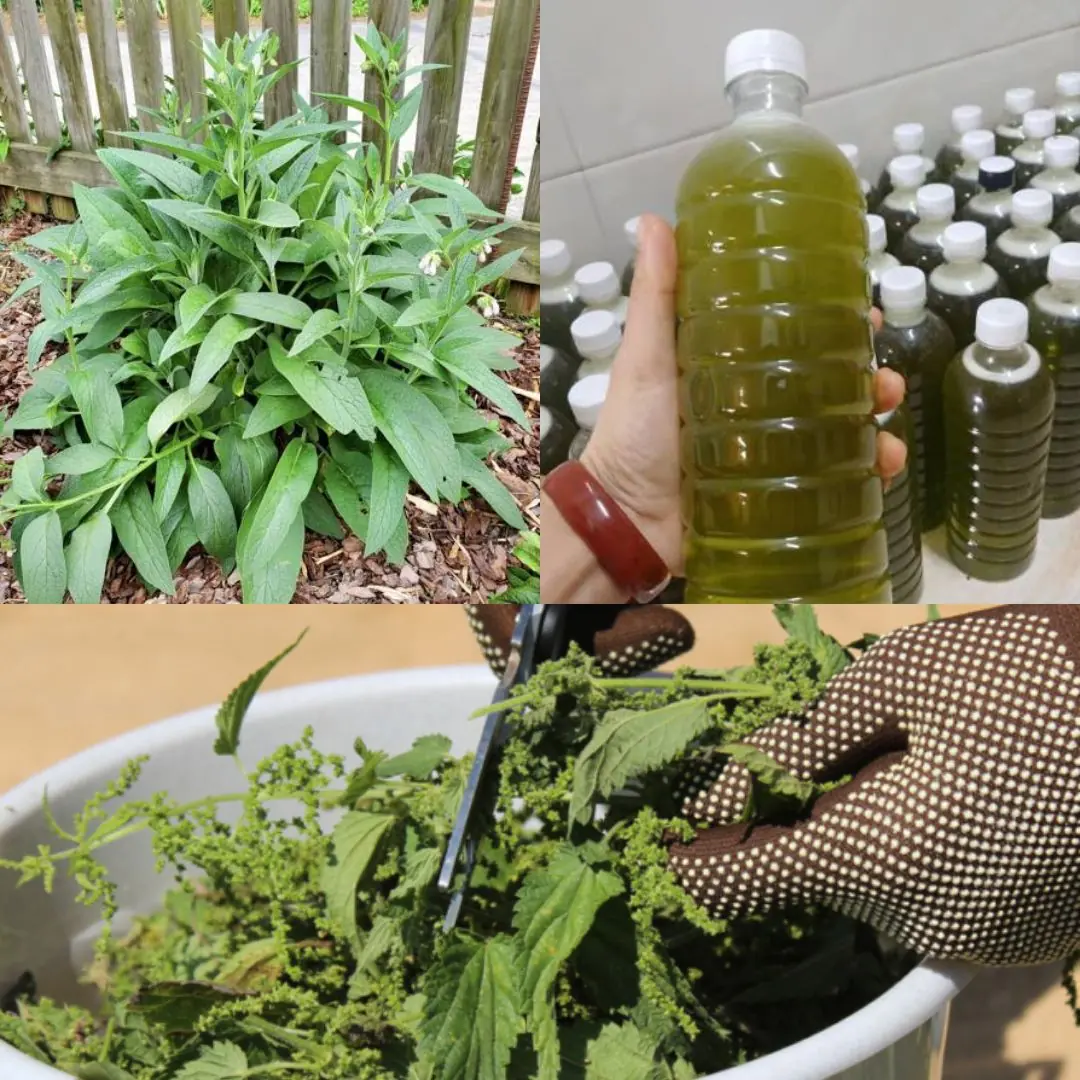
The Secret to Perfectly Sweet and Fluffy Boiled Sweet Potatoes: Add Just One Spoon of This!
Boiled sweet potatoes might sound like the simplest dish in the world — but if you want them buttery soft, naturally sweet, and never soggy, there’s a kitchen secret that makes all the difference: add a pinch of salt to your boiling water.
Yes, that’s it — but when combined with proper selection and timing, you’ll unlock the best flavor nature packed into every sweet potato.
According to the USDA Nutrition Research Center (2023), sweet potatoes are rich in beta-carotene, fiber, and natural sugars that caramelize beautifully when cooked under controlled heat. Proper boiling enhances both texture and sweetness without losing nutrients.
🧡 Why Sweet Potatoes Are a Superfood
Sweet potatoes (Ipomoea batatas) are among the most nutrient-dense root vegetables you can eat.
They’re loaded with:
-
Vitamin A (from beta-carotene) for strong immunity and healthy vision.
-
Vitamin C and potassium, supporting heart health.
-
Fiber and antioxidants, aiding digestion and weight management.
Eating boiled sweet potatoes 2–3 times per week can help regulate blood sugar, reduce cravings, and improve gut health (Healthline, 2024).
🥔 Step 1: Choose the Best Sweet Potatoes
Good sweet potatoes make or break the dish. When shopping, look for these signs:
✅ Shape: Choose medium-sized potatoes that are plump in the middle and slightly tapered at both ends.
✅ Skin: Smooth, firm, evenly colored. Avoid any with black spots, cracks, or bruises — those could indicate rot or pests.
✅ Smell: Fresh sweet potatoes should have a clean, earthy scent. A sharp, acrid smell means they’ve been damaged or infested.
Tip from BBC Good Food: Smaller, young sweet potatoes tend to be sweeter and creamier than large, fibrous ones.
🌤 Step 2: “Rest” the Potatoes Before Cooking
If you want a deeper sweetness, don’t cook your sweet potatoes right away.
Let them sit for a few days in a dry, cool, and ventilated area — not the fridge.
This resting period allows enzymes inside the potato to break down starches into natural sugars, intensifying the flavor.
Agricultural studies from Kyoto University (2022) show that resting sweet potatoes for 3–5 days increases sugar content by up to 40%.
💧 Step 3: Add Salt When Boiling
Here’s the secret step most people skip.
How to do it:
-
Wash the sweet potatoes thoroughly to remove dirt. Keep the skin on — it locks in moisture and nutrients.
-
Place them in a pot and fill with enough cold water to cover all the potatoes.
-
Add ½ teaspoon of salt for every liter of water.
Salt helps draw out excess starch, allowing the natural sugars to concentrate, making the potatoes taste richer and sweeter. It also helps them cook evenly without bursting their skins.
The Spruce Eats (2023) notes that salted boiling water raises the boiling point slightly, resulting in smoother, fluffier potatoes.
🔥 Step 4: Boil Gently
-
Bring the pot to a boil over medium-high heat.
-
Once the water starts boiling, reduce to low heat and simmer for about 10–15 minutes, depending on size.
-
To test doneness: pierce with a chopstick or fork — it should slide through effortlessly.
⚠️ Do not overboil. Overcooked sweet potatoes become mushy, lose sweetness, and absorb too much water.
🌬 Step 5: Steam Off for the Perfect Finish
When your potatoes are fully cooked, don’t remove them immediately.
-
Pour out all the water in the pot.
-
Place the pot back on the stove over low heat for 2–3 minutes until the skins begin to dry and slightly brown.
This step allows the residual heat to evaporate extra moisture and lightly caramelize the sugars — giving the potatoes a roasted aroma and texture similar to baked sweet potatoes.
✅ Result: sweet, fluffy, and fragrant — like dessert straight from nature.
Taste of Home (2022) calls this trick “dry steaming” — a simple way to concentrate sweetness and mimic oven-baked flavor using no extra equipment.
🌿 Pro Tips
-
Never boil with the lid closed — let steam escape to prevent sogginess.
-
Use older potatoes for a sweeter, chestnut-like flavor.
-
For added aroma, drop a slice of fresh ginger or a pinch of cinnamon into the boiling water.
-
Serve with a drizzle of honey or coconut milk for a naturally sweet snack.
🍽 Nutrition Snapshot (per 100g boiled sweet potato)
| Nutrient | Amount | Benefit |
|---|---|---|
| Calories | 86 kcal | Light, energy-rich |
| Fiber | 3g | Promotes fullness, gut health |
| Beta-carotene | 8500 µg | Skin, immunity, vision |
| Vitamin C | 19 mg | Antioxidant boost |
| Potassium | 337 mg | Heart and muscle support |
Source: USDA FoodData Central, 2024
🌈 Final Thought
A single teaspoon of salt — that’s all it takes to turn ordinary boiled sweet potatoes into golden, fluffy perfection. Combined with slow boiling and a final steam-off, you’ll get the rich, natural sweetness that rivals roasted ones — with far less effort.
So next time you boil sweet potatoes, skip the plain water and try this trick. Your kitchen will smell heavenly — and every bite will be naturally sweet, buttery, and melt-in-your-mouth good. 🍠
News in the same category


Instead of Spending 20k on a Wedding, This Family Decided to Travel the World

7-Eleven Contributes to College Fund for Baby Born on 7-11 at 7:11, Weighing 7lbs 11oz

Meet Danielle A. Scruggs, the Photographer Amplifying Everyday Black Life Through Digital Archives

Meet Rochelle Brock, the Photographer Expanding Representation in Fashion and Beauty

Meet Karl Ferguson Jr., the Photographer Capturing Black Legacy One Portrait at a Time

13-Year-Old Louisiana Student Creates Community Closet For Kids In Need

‘Oh Karen’: Milwaukee Attorney’s Drunken Threat to Fan at Baseball Game Backfires Spectacularly — and the Internet’s Loving It

Chicken Feet Stewed with Black Beans: The “Collagen Soup” as Nutritious as Ginseng

Save Hundreds on Electricity Bills Every Year by Cleaning This Hidden Part of Your Rice Cooker

7 Foods That Can Last for Years — Even “Past Expiration” Dates

Can Lemon Seeds Help with Snake Bites? Experts Explain the Truth — and Safe First-Aid Steps You Should Know

Reverse Premature Gray Hair Naturally: The Simple Starfruit & Potato Peel Remedy That Works Like Magic

The 4 Golden Hours to Drink Coffee for Maximum Health Benefits — Cleanse Your Liver, Boost Digestion, and Stay Energized

‘Start Talking Like This, They Lost Their Hunger ‘: Bills Fans Panic. Slumping Josh Allen Says Wife Hailee Steinfeld Taught Him He’s More Than A NFL Player

Husband Sings Passionate Rendition of Al Green’s Let’s Stay Together for Wife’s Birthday

Cordae Fulfills Mom’s Lifelong Dream Of Becoming a Singer by Inviting Her to Join Him on Tiny Desk

NBA Star Jayson Tatum Invests $2M in Homeownership Initiative for Families in Hometown of St .Louis

14-Year-Old Designed and Made Big Sister’s Prom Dress
News Post

A Long Push, A Quiet Kindness.

Top 3 Natural Remedies for Tooth Decay Using Guava Leaves

Life Skills in Action: How a 14-Year-Old Saved the Day on a Family Road Trip

The Gift of Life: How Blood Donations Save Children Fighting Cancer

Surviving the ICU: Carter’s Story of Strength and Grace

A Night to Remember: 19-Year-Old Austin Takes His 89-Year-Old Great-Grandma to Prom

How to Store Fresh Ginger for Up to a Year — No Fridge Needed!

Our Oldest Rescue, Tiger, Crosses the Rainbow Bridge: A Legacy of Love and Hope

Halo’s Second Chance — A Promise of Forever

Why should you put your suitcase in the bathroom when checking into a hotel: Extremely important reason, those who don't know are at a disadvantage

The washing machine accumulates a lot of dirt and bacteria: Pour 1 bowl of this into the washing drum to clean like new, clothes smell fresh right away

Put the phone down on the table, why you should put the screen face down: Know the reason no one wants to do the opposite

Comfrey Fertilizer: The Secret Natural Booster Your Garden Needs

Crush a handful of these leaves and put them in the room, all the mosquitoes will fly away, so you can sleep with peace of mind

Don’t Just Put Shrimp Straight into the Fridge! Do This Extra Step and Keep Shrimp Fresh and Delicious for Up to a Month Without Losing Flavor

Can You See the Hidden Number in This Optical Illusion

Cheap and Easy Ways to Clean Greasy Kitchen Wall Tiles Using Everyday Ingredients

These 3 Types of "Lumps" on Your Body Could Be Cancer – Don't Ignore Them at Any Age, Regardless of Gender
